Fietsvakantie in Denemarken: Østersøruten (Oostzee route).
Een nieuw land om te ontdekken op de fiets. Voorafgaand aan de reis hoorde we veel uiteenlopende verhalen. Wat konden we verwachten?
Met de Flixbus begonnen we het avontuur in Amsterdam. Via een overstap in Hamburg kwamen we in Flensburg. Een goedkope manier van reizen waarbij de fiets vrij gemakkelijk mee gaan. De fietstassen zaten in twee grote Ikea tassen om de bagage bij elkaar te houden. Enorm zwaar maar wel fijn qua het snelle in- en uitladen.

We hadden een routeboekje van Bikeline (Duits) met duidelijke kaarten. De route vanaf Flensburg staat achterin vermeld, officieel begint de route in Padborg. Op de gehele route zijn er soms alternatieven die op de kaart worden aangegeven.
Al snel kwamen we erachter dat het land toch niet op Nederland leek wanneer het aankwam op de heuvels. Deze hadden we echt onderschat. Falster was het enige eiland wat vlakker aandeed. Tijdens de eerste dag zaten er meteen twee heftige klimmen die eigenlijk niet te doen waren op het onverharde terrein. Deze hellingen werden op de kaart aangegeven met dikke pijltjes. Maar al fietsende bleken de aanwijzingen niet eenduidig te zijn, halverwege de route veranderde de richting waardoor stijgingen dalen werden en andersom. Soms hebben we stukken afgesneden via de grote weg om heuvelachtige gebieden te omzeilen.
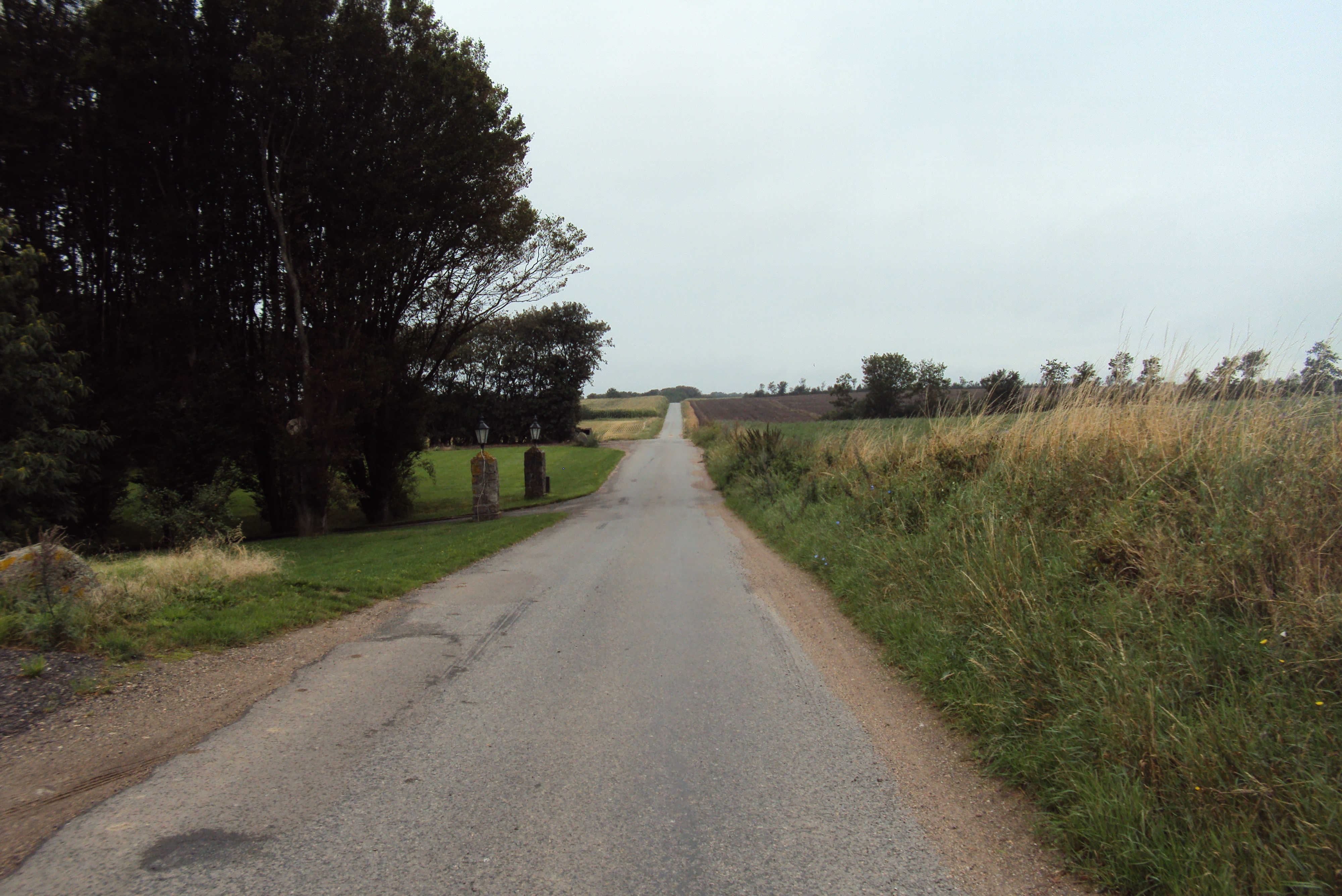
De campings waren goed aangegeven. Groot van stuk met vaak veel faciliteiten. Op één camping na hadden ze allemaal een keuken wat zeer luxe was. Ook stoelen of banken waren meestal aanwezig. De ‘natuurcampings’ vonden we het fijnst, minder kolossaal en iets goedkoper.
De route is goed gemarkeerd in beide richtingen. Bijna de gehele 800km is bewegwijzerd met routebordjes nummer 8. Ook staat er vaak op splitsingen het aantal kilometers naar de volgende (grote) plaats. Bij Næstved switcht tweemaal het nummer van de route, wel blijft er op het bord de Østersøruten staan, dit was wat verwarrend.

We schrokken van prijs op de eerste veer. Al snel bleek het om een retour te gaan, het eiland kon je daardoor van de andere kant weer verlaten. Sommige veerboten meerden maar een paar keer per dag af, wij hadden steeds geluk maar het is wel verstandig hier rekening mee te houden. De brug tussen Korsør en Nyborg is verboden voor fietsers. Hier kan je de trein nemen. In de zomertijden moet je hier een plaats reserveren voor je fiets. Dit nummer kan je bellen via de site. Wij waren op dat moment al op het station waarbij de automaat aangaf dat je moest reserveren.
Halverwege de route (omdat zowel de camping als jeugdherberg in Næstved niet (meer) bestonden), maakten we kennis met shelterplaatsen. Een systeem in Denemarken, vaak onderhouden via de gemeente, om gratis en legaal wild te kamperen. Via de shelter app zijn deze plaatsen te vinden. Soms moet er geboekt worden, soms is het op iemands terrein maar vaak is het gewoon wie het eerst komt, wie het eerst maalt. Uitzonderlijk mooie plaatsen met indrukwekkende uitzichten. Shelters zijn houten huisjes, begroeid met gras, die aan één kant open zijn. Je kan er je matje uitrollen en in slapen. Wij probeerde er de tent in op te zetten wat net niet paste maar wat wel fijner was qua muggen.


De Deense keuken bevat veel vleesgerechten wat ik soms lastig vond als veganist. We hebben vaak zelf gekookt in de avond. Dit was goed te doen. De prijs van de kronen is hoger dan de euro. Omrekenend maakte het ons kopje koffie al snel boven de vier euro. Maar met een beetje creativiteit kom je een heel eind. Koffie zette we vaak met een gasbrander onderweg waardoor we niet hoefde te zoeken naar cafés. In de natuur met een groen uitzicht is dit uiteindelijk toch het mooiste.
De Deense inwoners vonden we over het algemeen erg vriendelijk. Vele spraken redelijk Engels. De taal zelf was lastig te verstaan, het was moeilijk om woorden te onderscheiden. Het schrift daar in tegen had vele herkenbare woorden waardoor we vaak begrepen waar het over ging. Het viel wel op dat alle tekst vaak alleen in het Deens staat, op camping, in cafés en restaurants.
De verharde wegen zijn zeer goed fietsbaar. Vaak een fietspad maar soms ook langs de autoweg. Ook snelle wegen waarbij het af en toe eng was wanneer een vrachtwagen je in haalde. Toch voelden we ons er wel veilig. De staat van de onverharde wegen wisselde, van landweggetjes tot grote kiezelstenen. Toch hebben we alle wegen, al hobbelend, kunnen afleggen.
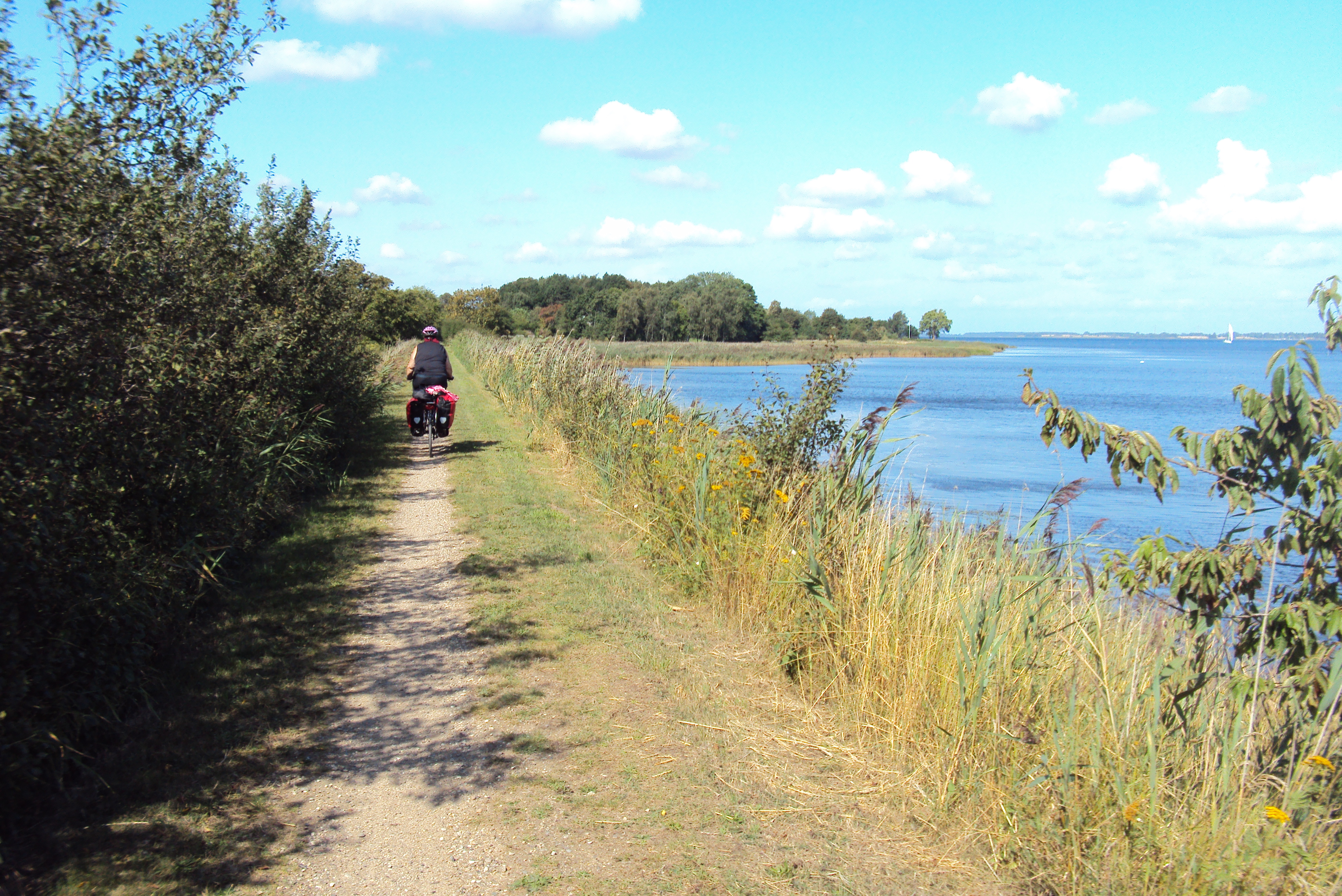
Het landschap is weids, veel akkers met graan en maïsvelden. Bossen, kiezelstranden, grasvelden en vooral veel zee. De grote huizen, vaak met enorme tuinen, hadden op ieder eiland verschillende stijlen. Kleurrijke boerderijtjes met rieten daken, villa’s en vakantiehuisjes. De grote steden beleefden we anders dan hoe we ze in Nederland kennen. Minder chaotisch en groots, meer geordend. De winkels waren ook erg ‘Deens’, weinig bekende namen zoals je deze meestal overal tegenkomt.
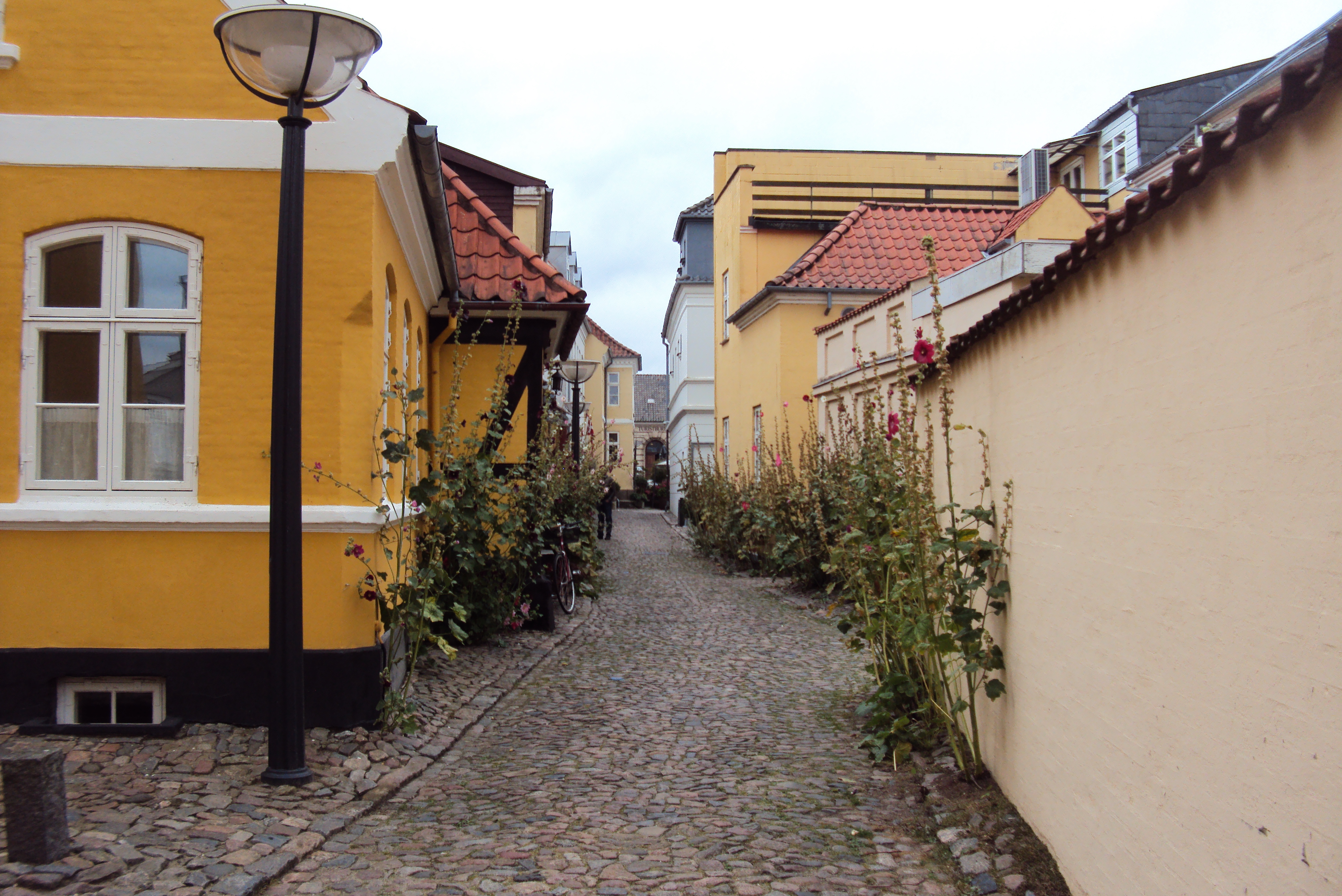
We zijn veel mede fietsvakantiegangers tegen gekomen. Met volledige bepakking, elektrische fietsen, ligfietsen, tandems en gezinnen met kids. Toch reden veel mensen de route ook omgekeerd. Achteraf gezien zou dit beter zijn geweest qua wind en berg: de route rijden als een echte acht. Vanaf Padborg eerst onderlangs en na Svendborg de cirkel eerst bovenlangs pakken.
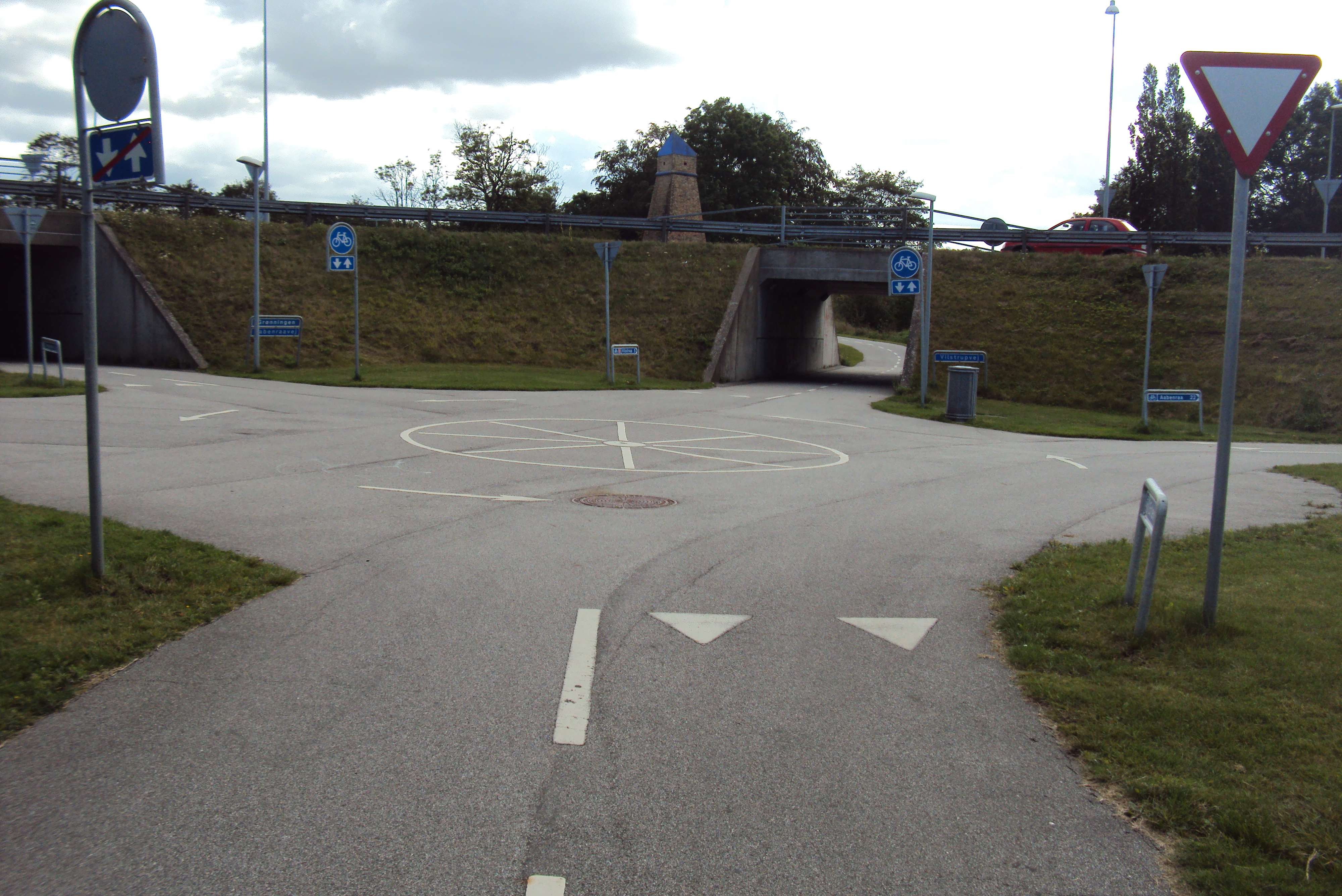
Al bij al een unieke beleving zoals wij de route hebben ervaren. We hebben erg genoten van de mooie omgeving, het golvende landschap, het wijde gevoel, de Deense cultuur en het prachtige zicht op de zee. Als fietsvakantieland een verrijking maar wel met wat wat training voorafgaand.
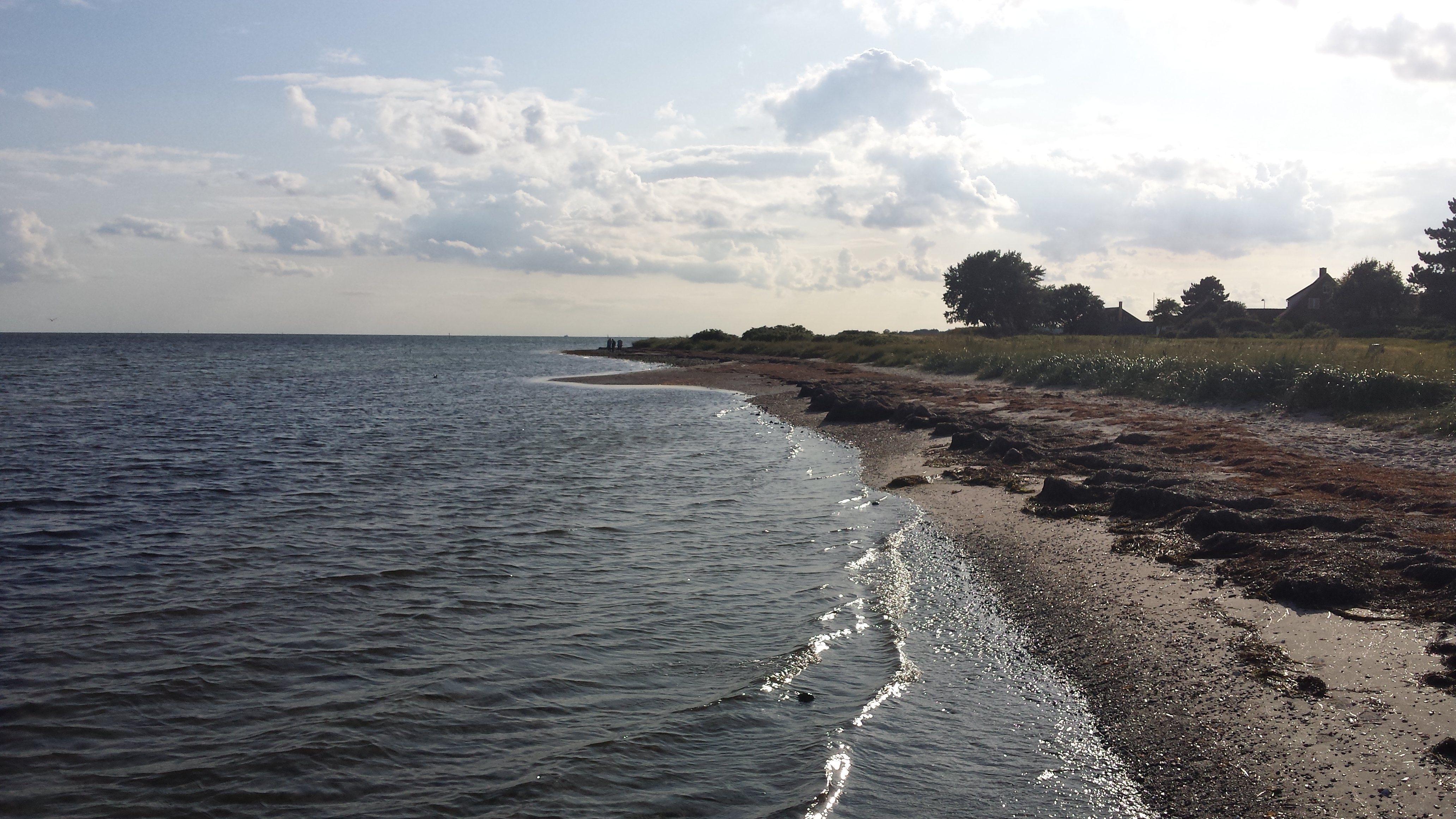
Østersøruten august 2019 review [English]
Cycling holiday in Denmark: Østersøruten (Baltic Sea route).
A new country to discover by bicycle. Before the trip we heard many stories. What could we expect? We are we? Monique (64) is a fantastic friend. Did a lot of bike vacations on her own in the past. I’m Merel (29) and have also a background with bike vacations with my parents. It is fine to share this way of traveling.
We started the adventure in Amsterdam with the Flixbus. We arrived in Flensburg via a transfer in Hamburg. An inexpensive way of traveling where it is easy to take the bicycle with us. The panniers were in two large Ikea bags to keep the luggage together. Very heavy but great in terms of the fast loading and unloading.
We had a route guide from Bikeline (German) with clear maps. The route from Flensburg is listed at the back, the route officially starts in Padborg. There are sometimes alternatives along the entire route that are indicated on the map.
Soon we found out that the country did not resemble the Netherlands when it came to the hills. We really underestimated this. Falster, an island was the only one that was flatter. During the first day, there were immediately two heavy climbs that were actually impossible to take on the unpaved terrain. These slopes were indicated on the map with thick arrows. But while cycling, the directions turned out to be ambiguous, halfway along the route the direction changed, causing ascents to become descents and vice versa. Sometimes we cut off sections of the main road to avoid hilly areas.
The campsites were well marked. Large in size, often with many facilities. Except for one campsite, they all had a kitchen which was very luxurious. Chairs or benches were also usually present. We liked the “nature campsites” the best, less colossal and slightly cheaper.
The route is well marked in both directions. Almost the entire 800 km is signposted with route signs number 8. There is also often the number of kilometers to the next (large) place at junctions. At Næstved the number of the route switches twice, but the Østersøruten remains on the sign, which was a bit confusing.
We were shocked by the price on the first spring. It turned out to be a return trip, so you could leave the island from the other side. Some ferries only moored a few times a day, we were always lucky but it is wise to check the departure times. The bridge between Korsør and Nyborg is prohibited for cyclists. Here you can take the train. In summer times you must reserve a place for your bicycle here. You can call a number what you can find on the site. At that time we were already at the station where the machine indicated that you had to make a reservation.
Halfway through the route (because both the camping site and the youth hostel in Næstved did not exist (anymore), we were introduced to shelter places. A system in Denmark, often maintained through the municipality, for free and legal wild camping. These places can be found on a shelter app. Sometimes it is necessary to book, sometimes it is on someone’s property, but often it is just first come, first served. Exceptionally beautiful pitches with impressive views. Shelters are wooden houses, overgrown with grass, which are open on one side. You can roll out your mat and sleep in it. We tried to set up the tent in it, which just did not fit but was nicer in terms of mosquitoes.
The Danish kitchen contains many meat dishes, which I sometimes found difficult as a vegan. We often cooked ourselves in the evening. This was doable. The price of the crowns is higher than the euro. Conversely, it quickly made our cup of coffee over four euros. But with a little creativity you can go a long way. We often made coffee with the gas burner on the way, so we did not have to search for cafes. In nature with a green view, this was ultimately the most beautiful.
We found the Danish residents very friendly in general. Many spoke reasonable English. The language itself was difficult to understand, it was difficult to distinguish words. The script, on the other hand, had many recognizable words so that we often understood what it was about. It was noticeable that all text is often only in Danish, on camping sites, in cafes and restaurants.
The paved roads are very easy to cycle. Often a cycle path, but sometimes also along the motorway. Also fast roads where it was occasionally scary when a truck overtook you. Still, we felt safe there. The condition of the unpaved roads varied, from country roads to large pebbles. Yet we have been able to travel all roads, bumpy.
The landscape is wide, many fields with grain and corn. Forests, pebble beaches, lawns and above all a lot of sea. The large houses, often with huge gardens, had different styles on each island. Colorful farmhouses with thatched roofs, villas and holiday homes. We experienced the big cities differently from how we know them in the Netherlands. Less chaotic and grand, more orderly. The shops were also very “Danish”, little-known names as you usually find them everywhere.
We have met many fellow cycling holidaymakers. With full luggage, electric bicycles, recumbent bicycles, tandems and families with kids. Yet many people also drove the route in reverse. In hindsight, this would have been better in terms of wind and mountain: driving the route like a real eight. From Padborg first along the bottom and after Svendborg first take the circle above.
Conclusion: a unique experience. We really enjoyed the beautiful surroundings, the undulating landscape, the wide feeling, the Danish culture and the beautiful view of the sea. An enrichment as a cycling holiday destination, but with some training beforehand.
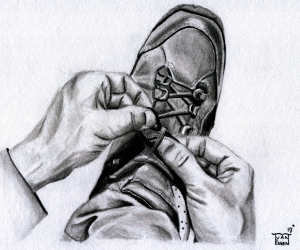
Mooi verslag straks de live versie👍😘